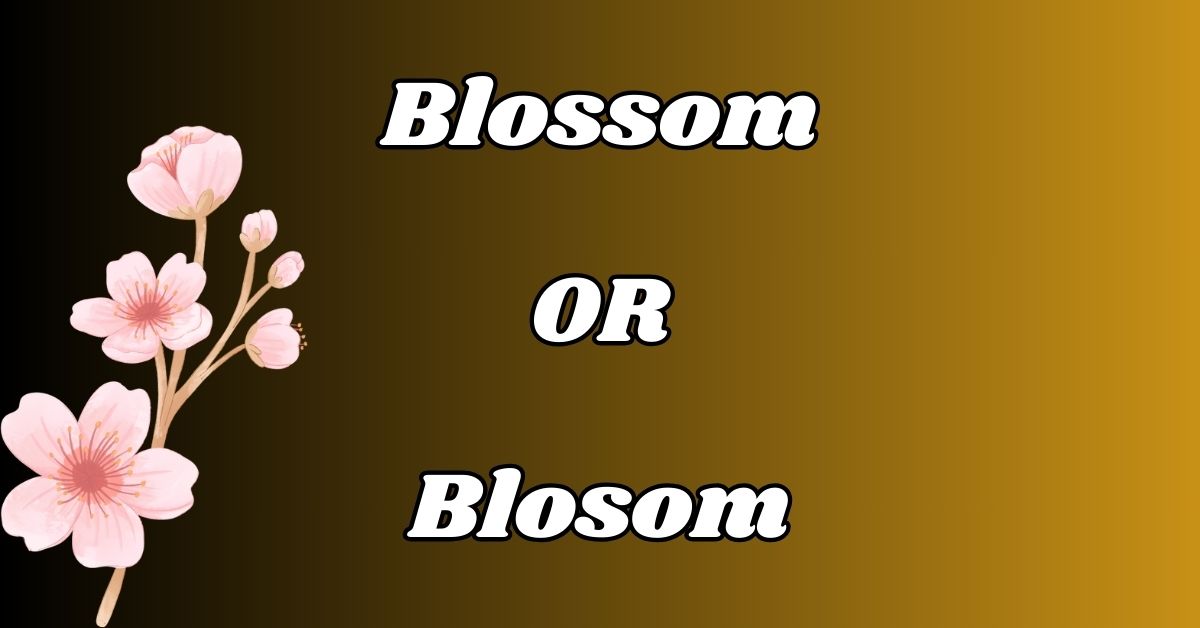Blossom or Blosom can often confuse many English speakers, leading to common spelling errors. Understanding the difference between these two terms is essential for effective communication.
While Blossom refers to the flowering part of a plant or signifies growth and development, Blosom is typically a misspelling that lacks recognition in standard English. This article will delve into the definitions, origins, and usage of both words.
By exploring examples and common mistakes, readers will gain clarity on how to use Blossom correctly in their writing. Whether you’re a student or a language enthusiast, mastering these terms will enhance your vocabulary and communication skills.
Quick Summary
Understanding the nuance between Blossom and Blosom is vital for precise communication. Blossom, denoting a flowering plant or a state of flourishing, is widely accepted. Conversely, Blosom is typically a misspelling.
This article clarifies their definitions and proper usage, equipping you with the knowledge to differentiate between the two. Mastering this distinction enhances both written and spoken English. We’ll explore their origins, and context, and provide clear examples to ensure confident use.
Difference Between Blossom vs Blosom
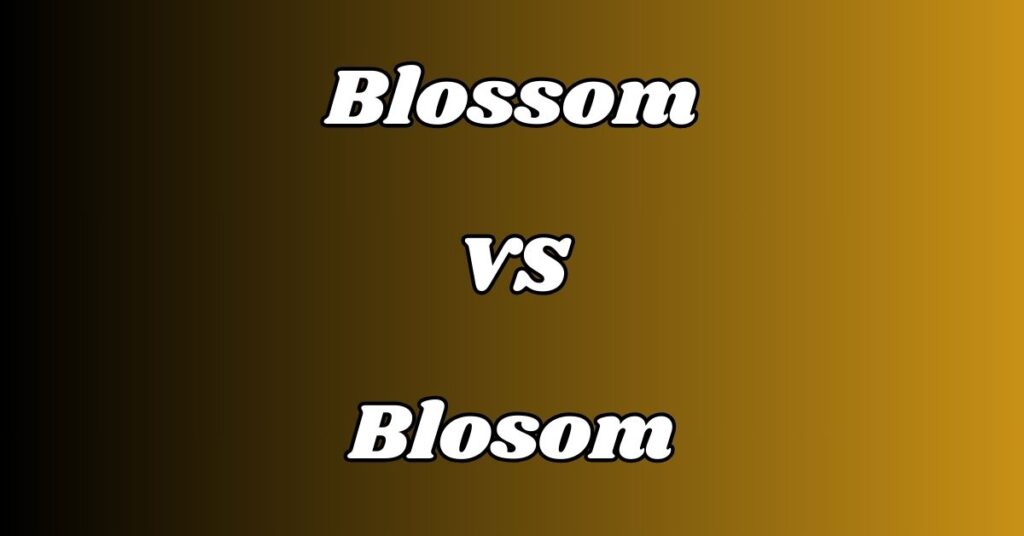
The main difference between Blossom and Blosom lies in their definitions and usage. Blossom is a well-known word that refers to the flowering part of a plant or can describe the process of growth and development.
On the other hand, Blosom is typically a misspelling of Blossom. While you might come across “blosom” in casual writing, it is not recognized in standard English. Understanding this distinction is crucial for effective communication.
Origins of the Blossom
The term “blossom,” denoting “a flower of a plant,” emerged around 1200, originating from Old English “blostm, blostma,” and Proto-Germanic “blo-s-“. This native word, connected to thriving and blooming, has largely been replaced by “bloom” from Old Norse and “flower” from French.
Figurative uses, referring to exceptional beauty or the prime of life, appeared in late Old English. The Old English verb related to blossom is “blōstmian” which means “to bloom, blossom, effloresce”. “Blossom” can also mean to produce flowers.
Blossom: Definition and Usage
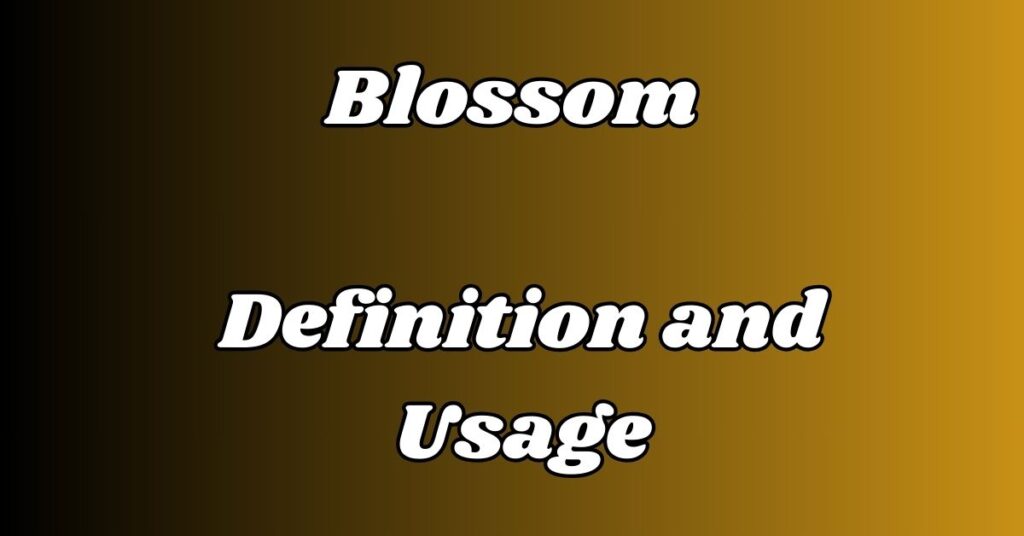
Blossom primarily refers to the flower of a plant, especially one on a tree. However, its usage extends beyond botany, signifying a state of flourishing or development. Think of a talent starting to blossom or a relationship growing stronger.
This versatile term captures both the literal beauty of flowers and the metaphorical blossoming of potential. Its widespread usage in English reflects its rich meaning. The English verb related to blossom is “blōstmian”
Blossom Definition
In simple terms, Blossom refers to the flower of a plant or tree. It can also mean to develop or flourish, especially in a metaphorical sense. For example, when someone says their talent is beginning to blossom, they mean that it is starting to grow and become more noticeable.
Blossom Usage
You can use Blossom in various contexts. In botany, it describes flowers blooming on trees or plants during springtime. In everyday conversation, it can refer to personal growth or relationships that are developing positively.
For instance, you might say that a friendship is blossoming when it becomes stronger.
Uses of Blossom in a Sentence
- The cherry blossom festival attracts thousands each year.
- She watched the flowers blossom in her garden.
- His talent began to blossom during high school.
- The trees are starting to blossom with spring.
- They celebrated the blossom of their friendship.
Synonyms of Blossom
- Bloom
- Flower
- Flourish
- Thrive
- Prosper
- Mature
- Bud
- Sprout
- Develop
- Effloresce
Blosom: Definition and Usage
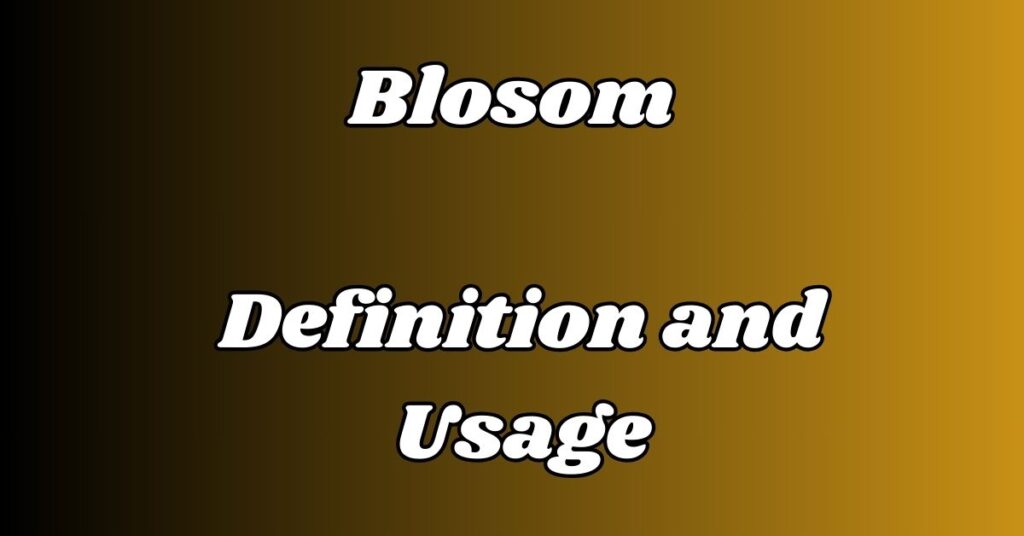
Unlike Blossom, Blosom lacks standing in standard English. It usually appears as a typographical error or a misspelling. While you might encounter it occasionally, especially in informal contexts, using “blosom” is considered incorrect.
Recognizing this distinction is essential to maintain clarity and credibility in your writing. Always double-check to ensure that you are using the correct spelling: “blossom,”.
Blosom Definition
Blosom is generally recognized as a misspelling of Blossom. It lacks a valid definition in standard English dictionaries. Therefore, “Blosom” should be avoided in formal writing. Always use “Blossom” when referring to flowers or a state of flourishing.
Blosom Usage
You might encounter Blosom when people mistakenly type it instead of Blossom. This error often occurs due to typing quickly or misunderstanding spelling rules. It’s essential to recognize that using “blosom” is incorrect and may confuse readers.
Side by Side Comparison
To help clarify the differences further, here’s a side-by-side comparison:
| Feature | Blossom | Blosom |
| Definition | Flowering part of a plant | Misspelling of blossom |
| Usage | Commonly used in English | Rarely used |
| Context | Botany, figurative language | Incorrect context |
Everyday Usage Examples
To solidify your understanding, consider these scenarios. A gardener might admire the blossoms on an apple tree, showcasing its literal usage. Figuratively, you might say a young artist’s career is beginning to blossom, illustrating growth.
However, using “blosom” in either context would be incorrect. Paying attention to how “blossom” is correctly employed versus the absence of “blosom” in reliable sources clarifies its proper usage.
Examples of Blossom in Context
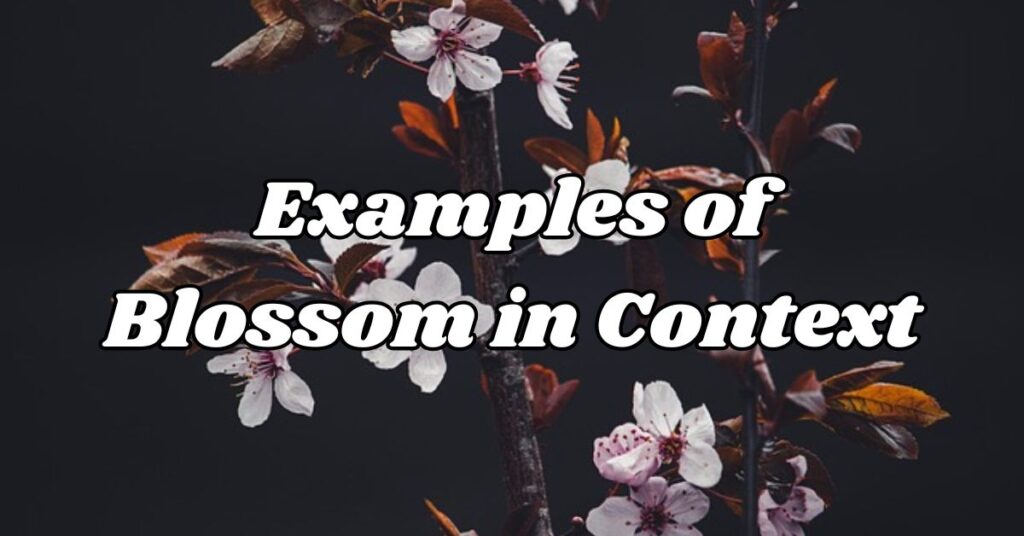
- The garden will blossom with color this summer.
- She felt her confidence blossom after the workshop.
- The apple trees are in full blossom.
- Their relationship began to blossom over coffee.
- He hopes to see his ideas blossom into reality.
Examples of Blosom in Context
- The tree will blosom soon.(Incorrect)
- I love how flowers blosom in spring.
- Watch the plant blosomed beautifully.
- The garden blosomed last year.
- She wants to blosom like the flowers.
Common Mistakes
One common mistake is interchanging Blossom and Blosom due to their similar sounds. However, only Blossom is a legitimate word. People sometimes type “blosom” out of habit or a simple misspelling.
Another error involves not fully grasping the figurative meaning of blossom, using it only in botanical contexts. Recognizing these pitfalls is the first step in avoiding them and improving overall language accuracy.
Tips to Avoid the Mistakes
- Double-check spelling before using Blossom.
- Use grammar check tools for writing assistance.
- Familiarize yourself with common botanical terms.
- Practice using both words in sentences.
- Read more literature to see the correct usage.
Tips to Remember the Differences
Keeping these tips in mind can help reinforce your understanding:
- Remember that Blossom relates to flowers and growth.
- Associate Blosom with incorrect spelling.
- Visualize blooming flowers when thinking of Blossom.
- Use mnemonic devices for learning definitions.
- Engage with language learning resources for reinforcement.
More Article: Beginning or Begening: What’s the Difference?
FAQs: Blossom or Blosom
Is it Blossom or Blosom?
The correct spelling is “Blossom,” which refers to the flowering part of a plant or the act of flourishing; “Blosom” is generally a misspelling.
Is Blosom grammatically correct?
No, “Blosom” is not grammatically correct in standard English; “Blossom” is the accepted spelling for both the noun and the verb.
What is the meaning of Blossom?
“Blossom” means to produce flowers or to develop and flourish, often used both literally for plants and figuratively for growth.
What is the common name for blossom?
The common name for “blossom” is “flower,” particularly referring to the flowers on fruit trees or other plants.
Conclusion
Understanding the difference between Blossom or Blosom is essential for clear communication in English. While Blossom signifies the flowering part of a plant and represents growth, Blosom is simply a misspelling that should be avoided.
By mastering the correct usage of Blossom, you enhance your vocabulary and writing skills. Remember to double-check your spelling to prevent confusion and ensure clarity in your messages.
Embracing these distinctions will empower you to express yourself more effectively in both written and spoken English.
Related Post: Mistrustful vs Distrustful: What’s the Difference

